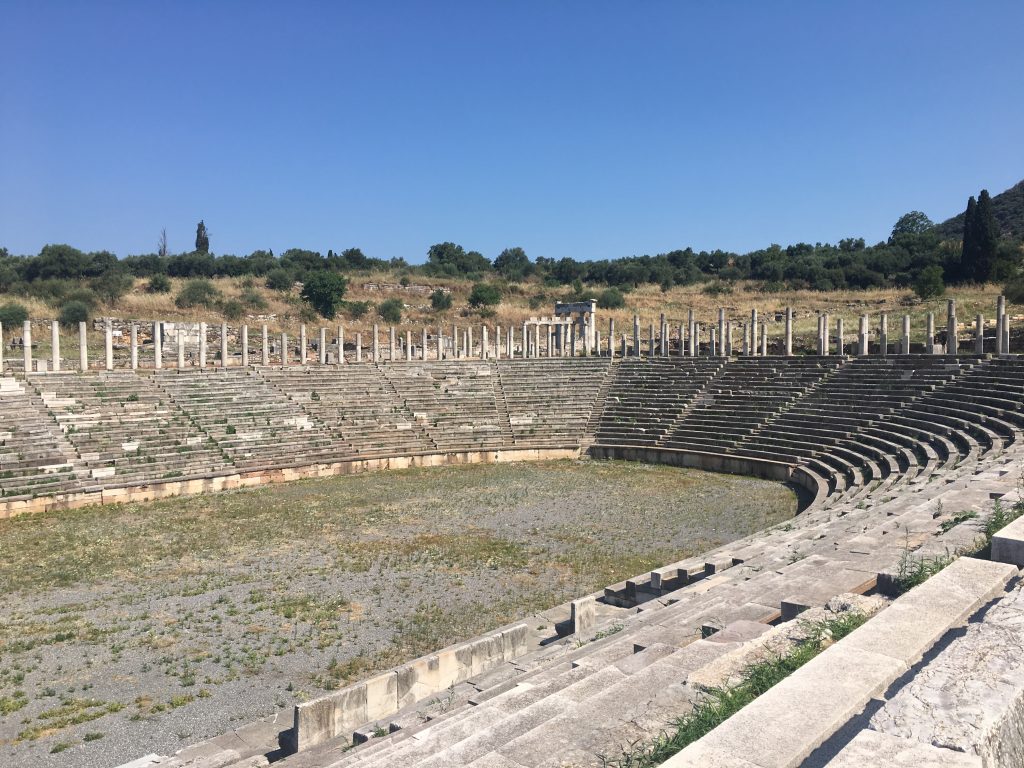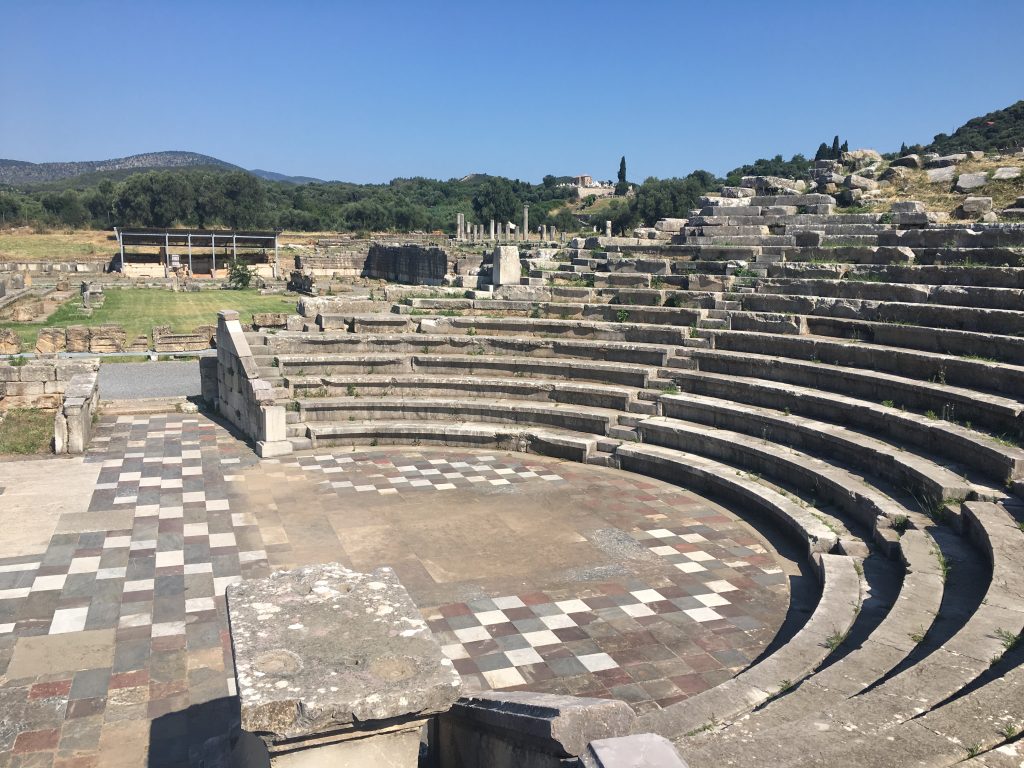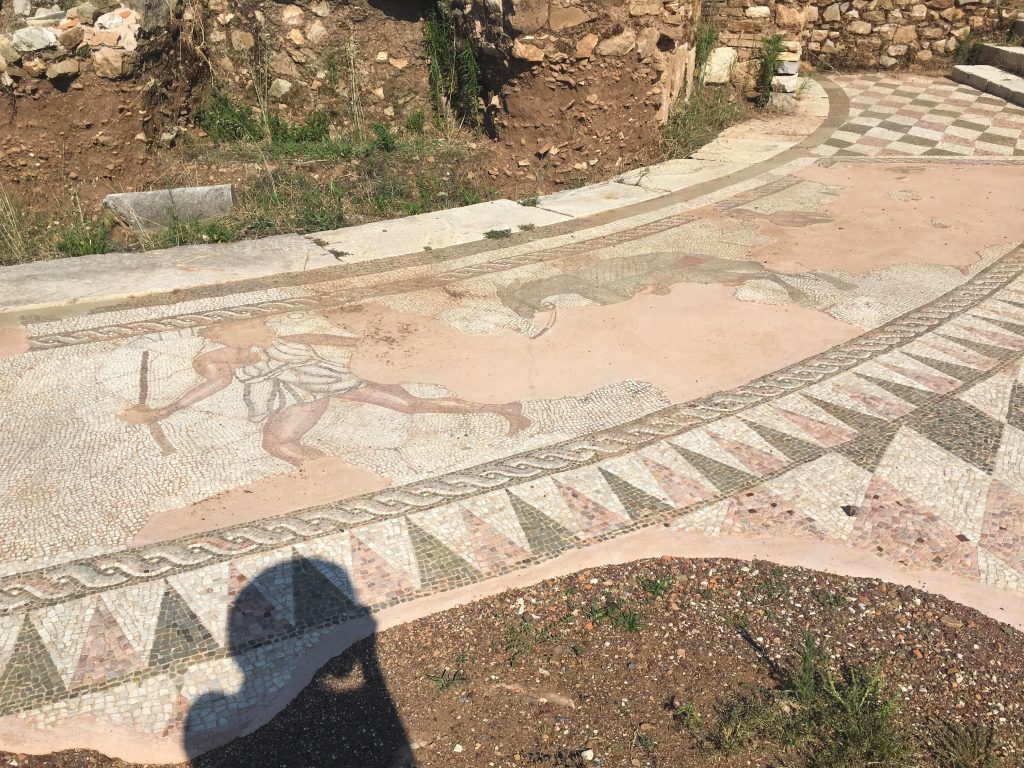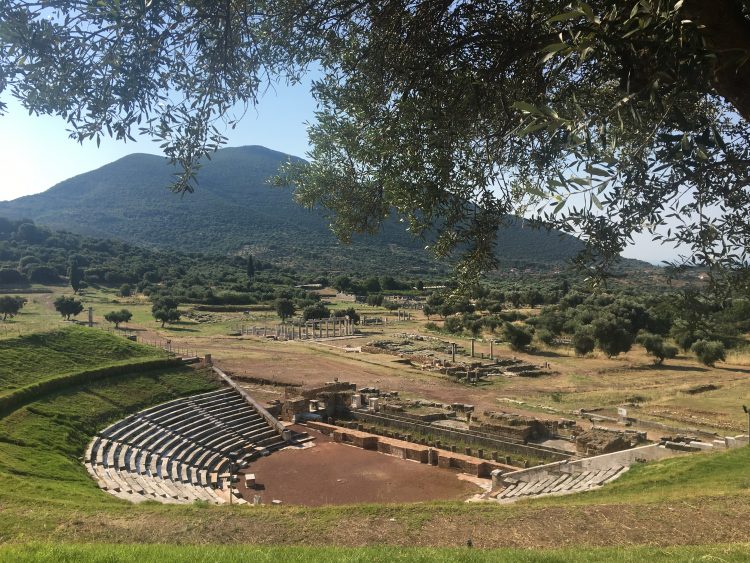The comedian Menander (342-490 BC), remains one of ancient Greece’s most influential playwrights. He was the leading representative of New Comedy, a theatrical form that originated in Athens. Plays of this kind focused on the struggles of everyday life, from issues concerning marriage, to money. Despite writing over one hundred plays during his lifetime, only one of Menander’s plays – Dyskolos ‘The Grouch’ survives nearly intact. Considerable sections of his other works, including Samia ‘The Girl from Samos‘, Aspis ‘The Shield‘, Epitrepontes ‘The Arbitration‘ , Misoumenos ‘The Man She Hated‘, and Perikeiromene ‘The Girl with the Shaven Head‘, were discovered in a papyrus book at Aphroditopolis, Egypt in 1905. However, many of his plays exist as fragments, from ‘The Widow’ and ‘Cousins‘, to ‘Olynthus‘ and ‘The Girl from Messene‘.

Not surprisingly, ‘The Girl from Messene’ is set in the ancient city of Messene, located within Greece’s Peloponnese region. Menander’s work centres around a young Messenian lady who fails to keep her promise to marry her official lover.
Today, the remains of Messene bear witness to the city’s turbulent history. Between the 8th and the 5th century BC, the area witnessed a series of wars between the Messenians and the Spartans, resulting in 400 years of Spartan occupation. The area was liberated when the Theban general Epaminodas defeated the Spartans in 369 BC, and founded the ancient city.

Nestled among the city’s ruins, you can still see mosaic fragments which feature scenes from Menander’s Messenian play. These depict the girl from Messene holding a cup, the peasant Attikos leading a saddled donkey, and the servant Zosimos dragging another donkey behind him.

The UNESCO archaeological site of Messene contains a fascinating array of public and religious buildings including temples, theatres, and an extensive Stadium – it’s an area not to be missed! Let me know if you have visited, or if you have read any of Menander’s works.
For more information about Menander, check out UCL’s guide to the playwright. If you want to read some of Menander’s plays, The Plays and Fragments, published by Oxford World’s Classics, provides a comprehensive insight into his work.

